3 Application and features of the manufacture of wire
The most important consumer of the described material is the enterprises of the electrical industry. Aluminum wire rod is used for the production of wire used in current collectors of electrical devices and machines, in their contact buses, power cables and other components. Also, aluminum products of different diameters are used as part of power plants and electrical networks.
Aluminum wires are used both for powering large industrial enterprises and for laying household electrical networks. And directly wire rod goes to the production of all kinds of components for electrical wiring. Less commonly, the aluminum products we are considering are used as packaging material, industrial cables, fasteners for technological mechanisms and special equipment.
In principle, high anti-corrosion performance (aluminum corrosion, as many know, is minimal) and excellent strength properties make it possible to operate aluminum wire in many other industries. The basic method of production of the wire rod described in the article is the technology of rolling on special mills of aluminum ingots, which are called wirebars. Such ingots are produced by casting according to a semicontinuous scheme, which involves a combination of two processes:
- first, the original aluminum is melted;
- then wirebars are obtained in a crystallizer.
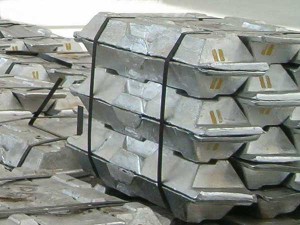
A standard rolling mill for the production of wire rod is a set of mechanisms and units that operate in an automatic mode and are interconnected. The mill includes a conveyor heating furnace. It can have oil, gas or electric heating. Also, the rolling-wire complex has several types of stands, including two-roll finishing, auxiliary (otherwise they are called intermediate), roughing. Aluminum raw material moves between them automatically during its processing.
Recently, the production of wire rod from aluminum grades 5E and 7E is increasingly carried out on more modern and efficient continuous-cycle lines. In this case, the final product is obtained from a liquid metal, and not from an alloy. Aluminum in the molten state enters the mold, made in the form of a rotating wheel. During the rotation of the device at a speed of not more than 2.5 rpm, water is supplied to the metal, which cools the aluminum raw material, as a result of which its crystallization occurs. After that, the metal goes to the rolling rolls, from where the finished wire rod comes out.
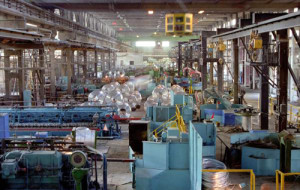
Separately, we add that during hot rolling, an oxide film of small thickness appears on the metal surface. It protects the aluminum from subsequent oxidation. Due to this protection, the wire rod drawing operation (the technology is similar to the copper wire drawing process) does not require the material to be etched.
4 Production of copper wire rod in reverberatory furnaces
Now in Russia, the technology of making wire in reflective furnaces has begun to develop by melting waste from copper products in them. So far, this technique is not used very actively, it produces no more than 4–5 percent of all wire rod produced in the Russian Federation. But the prospects for the technology, experts say, are there.
Copper scrap of at least the third class is used as a raw material for the production of wire in reverberatory furnaces. It must be checked for compliance with the required chemical composition, since many waste copper products contain too much lead and other undesirable impurities.For this reason, it is not recommended to use KMor wire waste.
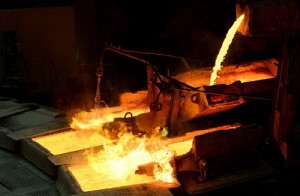
The use of scrap provides a reduction in the costs of the production process (hence, it also guarantees a decrease in the cost of the finished product). At the same time, the technique has a number of disadvantages:
- Reflective ovens must operate on a cyclical basis. The scheme of their work is as follows: loading of raw materials - 8 hours, the process of its oxidation - 8 hours, reduction operation, refining of liquid copper and its pouring - another 8 hours. Anyone can see that the oven works effectively only a third of the time of the entire cycle, which is unacceptable for many enterprises.
- Large consumption of gas mixtures required for conducting the process in reflective devices, as well as the need for constant (and very strict) control over the degree of melting of raw materials in order to avoid solidified copper "lumps".
- The quality of wire rod obtained from copper scrap is worse than that of products of the KMB and KM brands. It is not subject to international certification.
- Additional costs for the construction of special complexes for cleaning off gases and persistent chimneys.
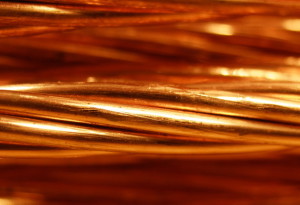
We hope that our article, as well as photo and video materials for it, allowed you to create the most complete picture of the current situation in the field of copper wire production.
Copper wire characteristics
Distinctive features: high electrical and thermal conductivity. Due to its high ductility, copper wire is an irreplaceable material as a base for electrical devices and wires. Also, copper wire has good flexibility and fracture toughness. Not exposed to the external environment, resistant to corrosion.
The technical characteristics of copper wire vary depending on the grade (M1, M2, M3).
Types of copper wire:
- by purpose: general, for low-temperature thermocouples, crusher;
- in shape: square (or rectangular), hexagonal, round cross-sections;
- along the width or diameter of the section;
- by the state of the material: solid, semi-solid, soft (as well as all of the above states with increased plasticity);
- in terms of production accuracy: normal, increased;
- by the type of cladding: coatings with tin, silver, nickel;
- by brand: M1, M2, M3.
In turn, solid wire, with its strong structure, does not have high flexibility. The soft copper wire is easy to bend. Marking material MM, is the main part for conductive cables and component conductors of different cross-sections. Copper wire becomes soft after annealing operation.
The color of the copper wire is golden red or reddish pink. The surface of copper shines, until the moment of oxidation (reaction upon contact with air), after - a film of oxides is formed and the gloss fades.
There should be no cracks, bumps, delamination, scratches, dents and other defects on the surface that have a depth greater than the maximum deviation. Leaks and stains of technological grease, reddened surface are allowed.
There are also special types of copper wire on the metal products market:
- the MC wire has a special set of properties, it is intended for connected lines through the air;
- enameled: MME (soft enameled copper), MTE (hard enameled copper);
- grades of oxygen-free copper wire: MMB (soft) and MTB (hard).
Copper rolled products of this type can be produced both from pure copper and clad with coatings of Sn, Ni, Ag. Oxidation resistance, resistance at low or high temperatures (up to 750 ºС), anti-corrosion properties, combines copper and nickel wires. The use of Ni and Ag for cladding makes it possible to manufacture high-quality products used in: aviation and space defense, electronics, television communications and other fields.
The strength properties of copper-based wire are an order of magnitude higher than those of aluminum.
Related Posts via Categories
- Copper wire from late blight - reliable prevention of disease
- Copper wire - from electrical appliances to jewelry
- Weight of steel, copper and aluminum wire - tables and calculation formulas
- Copper sheet is a popular and special rolled product
- Copper grades - production features and basic properties!
- Semi-automatic welding wire - choosing the right working tool
- Welding wire stainless steel - for corrosion-resistant seams
- How to choose and how much knitting wire should be taken for tying fittings?
- Copper and its basic alloys
- Application of flux-cored wire for semiautomatic device
Selection Tips
Typically, factories and large industrial enterprises buy wire rod from non-ferrous metals. For construction or installation, a steel type of wire is purchased. When buying, you need to know that the product should be sold in skeins. Hanks, as a rule, include 1 or 2 strands. And also it is worth knowing that with a two-core skein, 2 labels should be present on the product.
From these designations, it can be concluded that the product has normal strength and a diameter of 5 mm. The product was produced using accelerated cooling. This product fully complies with GOST.

In addition to studying information from the manufacturer, you need to conduct a visual inspection of the cores. The product should be free of scale, cracks, burrs. A defective product is one that has voids, bubbles and a lack of carbon.
And also do not ignore the general color of the wire rod. If the color is uniform, then you can be sure that the wire will be strong and flexible along its entire length.
For various works in which wire rod can be used, specific requirements are imposed on its properties. When buying a wire, it is imperative to evaluate the length and size of its cross-section, the cost of wire rod per 1000 kg directly depends on these characteristics. And also the cost of the goods is influenced by the material from which it is made.

Copper wire is considered the most expensive, aluminum is 2 times cheaper, steel is the cheapest, the cost of which does not exceed 30 rubles. for 1000 g. At will, the consumer can buy a coil of wire rod, in which from 160 to 500 kg. And also in small retail trade you can find skeins with less weight.
For more information on wire rod production, see the video below.
Basic provisions of GOST
The main physical properties and quantities in the form of technical parameters, chemical composition, test methods and geometric dimensions are determined by GOST R-53803-2010. All copper wire rod after 2010 is produced in Russia in accordance with this GOST.
The standard defines the nominal cross-sectional sizes adopted today in Russia. These are wire and copper rods with a thickness of 8 to 23 mm. Tolerances for a wire of 8-14 mm can be of the order of 0.4 mm, and for a bar with a cross section of 15 to 23 mm - 0.6 mm.
Existing standards divide copper wire rod into types, the marking of which means the method by which it was made. The methods determine the purity of the metal, on which its price directly depends. So, the Kmb marking means oxygen-free wire rod. But it also contains Moo subspecies with 99.99% Cu, M1 - 99.9%, M4 - 99.0%, where the numbers indicate the Cu content in percent. Moo belongs to the cathodic electrolytic grades, completely devoid of oxygen and which has the highest electrical conductivity with the lowest possible resistance. and the cost per kilogram of such copper is the highest. But the KMor marking informs that this copper rod is made of refined waste and copper scrap, that is, there are different types of copper in such a rod.

Decoding of markings
The “M” before the metal purity index simply means “copper”. Two "zeros" (00) - high purity. One zero (0) is just pure. With numbers 1,2,3 - technically clean. The last element of the markings is usually an alphabetic index, meaning the way in which the metal was cast: K - cathodic.Y - remelted cathode. Oxygen-free copper is denoted by letter B, deoxidized copper - P, and deoxidized by introducing phosphorus into the melt will be marked in the marking, respectively, letter F.
All in all, about 20 grades of this metal are produced in Russia, intended for use in various industries.
Copper rod with KM marking occupies an intermediate position between these grades.
The GOST adopted in 2010 allows the manufacture of copper wire rod of other nominal sizes, if such was the customer's request.
There is also a list of chemical elements that are strictly regulated by GOST according to their limit values in the composition of copper for industry. These are bismuth, arsenic, sulfur, antimony, lead, tellurium, selenium, silver, iron and oxygen. Their share in the total mass of a copper ingot or wire rod should not exceed a value from 0.001 to 0.005%. Most of the harm to the quality of copper is caused by the content of bismuth and lead, since these substances make copper brittle with even a slight heating. Therefore, the mass percentage of these elements should not exceed 0.001%. The presence of sulfur and oxygen in copper improves its ability to succumb to the cutting procedure, but sulfur at the same time impairs the ductility of this metal.
The content of such substances as phosphorus, cobalt, silicon, nickel, manganese, chromium, tin, zinc and aluminum is not regulated by GOST.
On the surface of the drawn wire there may be dents, marks, gouges and scratches, but if their dimensions do not exceed 0.2 mm, the material is suitable for production approval. An exception is made only for high-precision technologies.

Product requirements
But in some cases, additional requirements are put forward:
For finished products, twisting-unscrewing tests are provided.
- A wire with a cross section of 16 mm or more must withstand 3 twisting-untwisting cycles. With a section from 13 to 16 mm - 5 cycles. And with a section from 8 to 13 - 10.
- The elongation of the wire rod at break must be at least 35%.
- The value of the temporary resistance in megapascals must be expressed as a number of at least 160.
Additional tests can be carried out at the insistence of the client (customer). So, it can be tests for hydrogen brittleness for KMB grades and for spiral elongation - such a test may be required for KM and KMor grades.
Although the category of "scrap copper" can fall into the category of quite normal and even high-quality copper. This can happen when:
- The percentage of oxidation of the metal in the bay exceeded with the measurement method weighing 0.01.
- The presence of mechanical defects in the form of tears, notches and dents, if the cleaning could not eliminate these defects.
- Exceeding the shelf life of a coil of wire rod for more than 3 months (after the expiration of this period, a comprehensive check of all parameters of the coil is required, and if at least one of them does not correspond, even refined copper with a purity of 99.99% can be recognized as scrap). Therefore, the manufacture of grades of cathode electrolytic copper of high purity is always done for a specific customer and in the case of only 100% prepayment, with a warning about the possible consequences of not delivering the ordered wire rod on time.
1 What is wire rod and its main types
Wire rod is produced in three main types: steel, aluminum and copper. What kind of metal products it is, how it is produced and what it is used for, you can learn from the articles "Wire rod - what kind of wire" and "Production and use of steel wire rod".
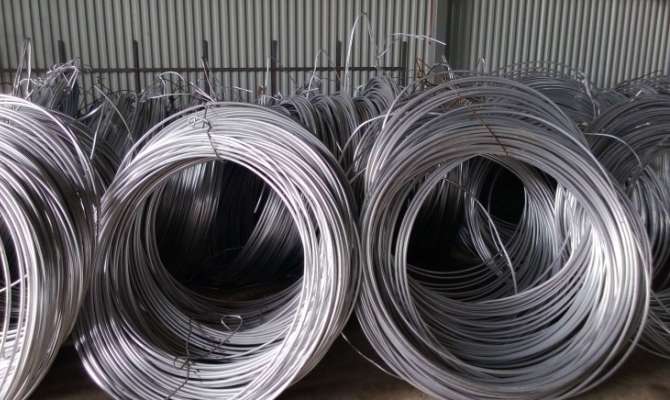
Each of these main types of this metal product is produced according to the corresponding GOST, from a brief description of which, by the way, you can find out its main purpose:
- Steel is manufactured according to standard 30136-95. It is intended for its subsequent constriction on a wire, as well as for other purposes. According to this GOST, the following diameters are produced: wire rod 5 mm, then 5.5, 6, 6.3, 6.5, 7, 8 mm and, finally, 9 mm.These sizes are regulated as standard - mandatory for manufacturers. And by agreement of the customer of wire rod with the manufacturer GOST, it is allowed to make products with a diameter of more than 9 mm, but in coils.
- Aluminum wire rod - according to the standard 13843-78, is intended for the subsequent manufacture of wire and other electrical purposes. It is produced by continuous casting followed by rolling. Standard diameters in the range 9–25 mm. At the request of the consumer, GOST is allowed to manufacture products with other diameters.
- Copper rod - according to the standard R 53803-2010, is intended for the subsequent production of wire, contact bars and wires, as well as other electrical purposes. Standard diameters in the range 8–23 mm. And by agreement of the customer of the wire rod with the manufacturer GOST, it is allowed to manufacture products with other diameters.
Copper rod production
Copper wire rod is produced using the technology of drawing metal through rolling rollers on special mills, where they make profiled material (wire) of different thicknesses from wire rod.
As it passes through the rolls, the copper wire rod, which turns into wire under their influence, is subjected to strong heating by means of eddy induction currents or in a gas flame. After passing through the rollers, the hot wire is laid into coils using devices called coilers. At the same time, the material is cooled. In slow-working coilers and on thin wires, such cooling occurs naturally; during fast winding of the finished product, forced air blowing is used.
Due to the preheating in the drawing phase, the process is called hot rolled.
Manufacturers
Wire rod manufacturers strictly monitor the quality of their products, so it is produced in accordance with GOSTs. Currently, a large number of brands of this rolled metal are known.

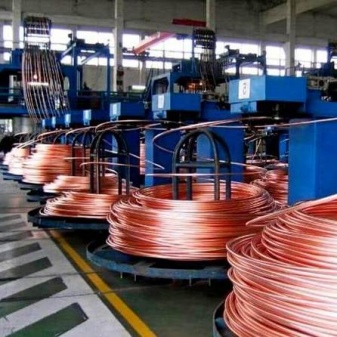
There are many popular wire rod manufacturers:
- Liepajas Metalurgs - Latvia;
- TECRUBE - Azerbaijan;
- "Absolute" - Russia;
- Alkor Trading Company - Russia;
- Amurstal - Russia;
- Areal - Russia;
- "Balkom" - Russia;
- Belarusian Ministry of Health;
- VISMA - Belarus;
- Danko - Ukraine;
- Dnepropetrovsk MZ;
- Dneprospetsstal - Ukraine.
This list of companies that are engaged in the production and sale of wire rod made of copper, steel, aluminum cannot be called complete, there are much more of them in Russia and the CIS countries.

Packaging and labeling
Copper rod is supplied strictly in one one-piece piece, coiled into coils, without breaks or fractures along the entire length. Coil weight is agreed with the buyer. There should be no entanglement and overlap of turns - this will interfere with the unhindered unwinding of segments of the required length. The tightness of wire rod winding in the coil must ensure and guarantee its integrity during packing and delivery to the place of consumption.
For the preservation of its shape, the bay must be tied up in at least three places around the circumference with a special steel or nylon tape. In addition to bandaging, packaging can be made that protects the coil of wire rod from atmospheric precipitation and other adverse effects. Packaging is a mandatory procedure that is done by default, but it can be omitted if the customer so desires.

4 Packaging and labeling of rolled copper wire
Wire rod is delivered in one piece in coils, the weight of which is negotiated separately with the buyer. It is not allowed to overlap and entangle turns in the coil, since their presence does not allow free unwinding of the wire
It is important - the winding must have such a density that would guarantee the integrity of the coils during their packing and transportation.

Wire packaging (at the customer's request, wire rod is delivered without packaging) is necessary for high-quality protection of products from climatic precipitation and possible pollution during transportation.Each bay must be tied up in three or more places with a special steel tape.
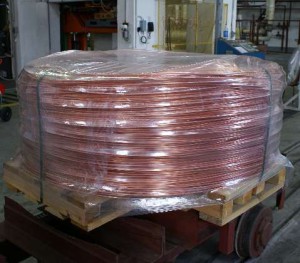
A label is attached to the wire coils with the following information:
- trademark (name) of the manufacturer;
- bay and batch number;
- wire rod brand and its main characteristics (symbolic designation);
- gross and net weight;
- date of manufacture;
- conformity mark if the product has passed official certification.
3 What means and methods are used to test the finished wire?
Copper rod must be checked:
- According to the State Standard 26877 for ovality.
- According to Gosstandart 6507 for compliance with the declared diameter. The measurement is carried out with a caliper or micrometer with a division of up to 0.01 millimeters. Moreover, the measurement aims to establish the minimum and maximum size in each section, and the measurement is carried out strictly at a distance of 20 centimeters from the end or the beginning of the bay with wire rod and exclusively on straight sections.
- Visually to determine the quality of the surface of the product. Magnifying devices are not used. If any surface flaws are found, they are cleaned until they are brought to acceptable values.
- According to Gosstandards 31382, 27981, 13938, 9717 for chemical composition. If the production has a modern chemical laboratory, it is allowed to investigate the chemical composition of wire rod using other methods, provided that they do not conflict with GOST R 8.563.
- According to State Standard 7229 for electrical resistivity. In this case, a high-precision laboratory balance and micrometer are used.
- According to GOST 1497 for elongation and resistance.
Wire М1
M1 wire is considered to be of the highest quality and most expensive. The purity of the copper alloy used for its production is 99.9%. Composition: Cu - 99.9%, impurities (like Pb, Fe, Ni, S, As, Sb, Bi, Sn) - no more than 0.1%. According to physical characteristics, it happens: hard (M1T), soft (M1M). Other types of wire M1: oxygen-deoxidized (M1P), oxygen-free (M1B), phosphorus-deoxidized (M1F), cathode (M1K).
Wire M1 differs from other rolled sections (M2, M3) by its increased operational characteristics, due to the minimum content of impurities in the material. It has good thermal and electrical conductivity. Bends well while maintaining strength properties. Nice appearance.
This wire is most often used in such areas as aircraft and shipbuilding, power engineering. They produce cords, cables, thermocouples, wires, high-tech cryogenic equipment.
General information about copper
Copper. The name in the periodic table is Cuprum (Cu). The serial number is 29. Group I or a side subgroup in the table, in its 4th period. The name comes from the name of the island of Cyprus, from where it was exported to the ancient city-states of the Mediterranean for use in everyday life, in the economy and in war.
In the metallic phase, it is a pink-red substance, soft and malleable when heated to 700-800⁰С. It melts at a temperature of 1084.5 C. It can be processed by pressure both in cold and hot conditions, as well as to all types of soldering and casting in any shape, as well as cutting. After melting, when the melt temperature reaches 2,560⁰С, the liquid metal begins to boil.
The chemical composition of impurities and the method of metal production also affect such properties of copper as thermal conductivity, specific heat, resistivity and associated electrical conductivity, elasticity, hardness and ultimate strength.
Copper grades
The classification of copper in Russia is adopted in accordance with GOST 895-2001 and R-53 803-2010 “Copper. Stamps ".
Using cathode grades of copper in electrically conductive networks or in high-precision equipment, they are often divided into subspecies MooK (cathodic) and MooB (oxygen-free), having a purity of 99.99 (the percentage of impurities of foreign substances is 0.001).
The emphasis on oxygen-free copper is not in vain: oxygen in the metal is not only an undesirable oxidant, but also significantly reduces the ductility and strength of the metal. No less harm is caused by the presence of hydrogen molecules in the atmosphere, which, with significant heat treatment of copper (and not necessarily its melt), diffusely penetrates deep into the metal into its upper boundary layer and in it reduces copper oxide to pure metal and water. Molecular water with repeated heating is capable of producing a local high pressure in the crystal lattice, which can form ruptures, porosity and microcracks in the monolith.
These phenomena are especially harmful if high-temperature brazing or welding of copper surfaces is being done, as the strength of the joints decreases.
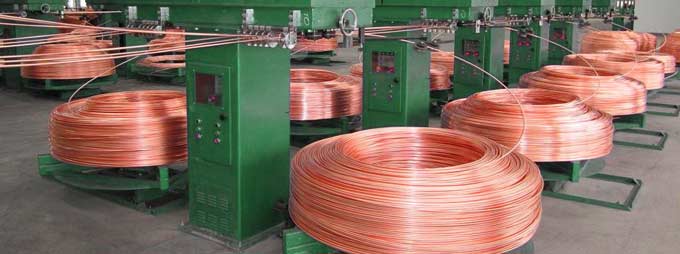
Hydrogen disease
However, "hydrogen disease" is typical only for high-temperature welding and rations. In “soft” soldering, below 400 ° C, the phenomenon of hydrogen embrittlement can be neglected, hydrogen atoms below 400 degrees do not diffuse deeply into the metal - and the more the soldering temperature drops below 400 ° C, the less the effect of this metal reducing agent from oxides.
To prevent oxidation or the influence of hydrogen, the metal is melted
- In a vacuum.
- In an atmosphere of inert gases (argon).
- Under a layer of charcoal.
Although the most common way to prevent "hydrogen sickness" is the introduction of an oxygen-binding additive into the metal composition during melting and does not affect the physical parameters of the metal after castings or broaches. Phosphorus is used as an additive.
The quality criteria applied in Russia and in the EU countries are almost the same. The difference often turns out to be in the requirements for controlling the quantity and quality of admissible or specially introduced impurities. So, the Russian M1F and Cu-DHP, although they are analogs, have different impurities. In practice, this is expressed in the fact that in Russia the control of impurities is tighter, and the chemical composition of the metal is more stable in its physical characteristics. In M1F, in no case is it allowed to use scrap when smelting, especially from refined copper fragments. In Cu-DHP, this is the norm.
Strength can be characterized by three states of the same brand: at a tensile strength of 210 MPa, copper is "soft", at 250 MPa - semi-solid, and at 280 MPa - solid. Accordingly, M (foreign analogue of R 220), PT (R 250) and T (R - 280). Although, in addition to T, there are also more durable (solid) states of copper. Copper even lends itself to quenching as a way to increase hardness - for this it is heated to 600⁰C and slowly cooled.

Copper wire application
Due to its high electrical conductivity, copper wire has become widespread in such areas as construction, electric power, auto and aircraft construction, etc. In most cases, using copper wire (with a diameter of up to 8 mm), electrically conductive conductors (wires, cords, cables) are produced. Copper bars are used in electrical engineering, cryogenic equipment, transformer substations, and also used as a winding for motors.
Main areas of application for copper wire:
- electroplating - if it is necessary to cover the surface of small-volume products, use copper wire;
- construction - often used for decorative cladding, plastering, or as a material for reinforcement, screening;
- welding - thin sheet metal is welded;
- light industry - they are used for the frame when sewing soft toys; they also make handicrafts;
- bijouterie - jewelers use it to make jewelry, jewelry;
- electrical engineering - in this area, copper wire has the greatest application, it is used for the production of almost all types of electrical conductors, it serves as a winding in motors;
- agriculture - used to accelerate the maturation of plants;
- medicine - copper wire is used in folk and scientific medicine.
Conclusion
Over the millennia of use, metallurgists-practitioners, even without scientific calculations, have learned about many secrets of this metal, which made it possible to use it in many spheres of human activity. The manufacture of copper wire from wire rod for the use of the needs of electrical engineering and electronics opened new horizons for copper.
The depletion of natural reserves of copper (the total share of this element in the earth's crust does not exceed 0.01% and in terms of quantitative composition in nature, copper holds only 23rd place) requires the production of new materials for the transmission of electricity over long distances, moreover, without significant losses.
For this, alloys of copper and aluminum have been developed - which until recently seemed either impossible or too expensive.
Yes, in such alloys, electrical and thermal conductivity decreases. But it will still be higher than that of a purely aluminum stranded wire, which is now used on power lines to transport electricity over long distances. So the conductive palliative in the form of copper and aluminum for these purposes has very real prospects. And in-house wiring made of aluminum-copper alloy is already used in the construction of housing and industrial facilities.
Techniques worked out on copper wire rod will make it possible, in the event of a large-scale application of new alloys, to easily reconfigure production from wire rod (now copper-aluminum) drawn wire with new or customary properties for pure copper.
